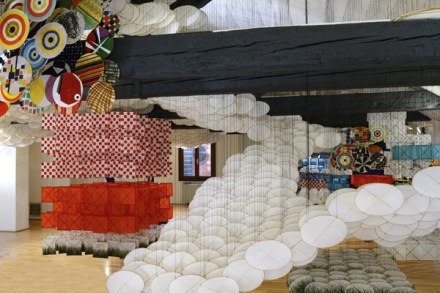Venice Biennale: from unusual sexual obsessions to a primary school Open Day
William Empson believed that ‘the arts are produced by overcrowding’. But, as 20,000 invited guests and 4,500 accredited journalists surged through the pavilions of the Giardini and Arsenale on the 55th Venice Biennale’s preview days last week, it was more a case of overcrowding being produced by the arts. Over the past 20 years the Biennale has inexorably expanded with every edition. In 1993, 53 countries were represented. This year there are 88, with Angola, the Bahamas, Bahrain, the Ivory Coast, Kosovo, Kuwait, the Maldives, Paraguay, Tuvalu and the Vatican officially appearing for the first time. There are nearly 50 official collateral events and scores of other exhibitions around town.
















